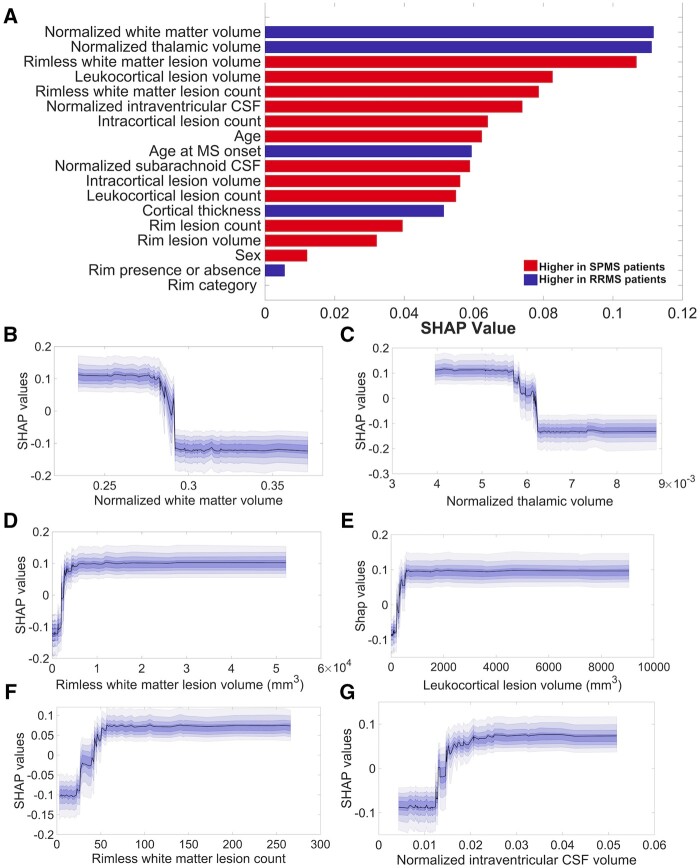Figure 4.
Machine learning in disease stage prediction in a cohort of 100 multiple sclerosis patients. The resulting SHAP features ranking (A) derived from XGBoost model lists, in descending order, starting with the most significant features in disease stage prediction. The model reached a mean±SD area under the curve value of 0.82 ± 0.08, a sensitivity of 0.78 ± 0.09, an accuracy of 0.77 ± 0.07 and a specificity of 0.73 ± 0.17. The partial SHAP dependence plots (median and confidence intervals across repetitions, B–G) are shown for the top six most important features for classifying multiple sclerosis patients in different disease stages [relapsing-remitting multiple sclerosis (RRMS) and secondary progressive multiple sclerosis (SPMS)].

